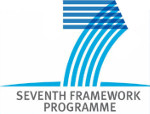An operational approach for the designing of an energy integrated oxy-fuel CFB power plant
Espatolero, S. ; Romeo, L.M. (Universidad de Zaragoza) ; Escudero, A.I. ; Kuivalainen, R.
Resumen: In order to increase the overall net electric efficiency and consequently to decrease the energy penalty in oxy-fired systems, heat integration configurations must be proposed. Coupling among the Air Separation Unit (ASU), the Compression and Purification Unit (CPU) and flue gases leaving the boiler becomes critical to obtain good efficiency figures. Many solutions have tried to show outstanding efficiency results but practical proposals are necessary to develop the technology. The use of flue gases waste energy to recycle flue gases heating up, oxygen preheating and increasing temperature of feedwater to steam cycle has been proposed to surpass the efficiency reduction. Nevertheless, care should be taken as potential problems would appear if only theoretical analysis is carried out. This work deals with a suitable and flexible design to increase the overall efficiency of an oxy-fuel combustion power plant working with high O2 concentration. Waste energy has been integrated avoiding any potential risk/damage into a new designed steam cycle. Applied solutions try to use lower cost proven materials in heat exchangers and simple equipment designs avoiding gas-gas heaters. Novel arrangements are presented, such as indirect heat exchangers, plastic heaters or different configurations integrating high pressure feedwater and low pressure condensate mass flows. Finally, results are compared with a previously optimized power plant design without operational restrictions and just a slight reduction in power plant net efficiency (less than 1%) was observed between both concepts.
Idioma: Inglés
DOI: 10.1016/j.ijggc.2017.07.018
Año: 2017
Publicado en: International Journal of Greenhouse Gas Control 64 (2017), 204-211
ISSN: 1750-5836
Factor impacto JCR: 4.078 (2017)
Categ. JCR: ENERGY & FUELS rank: 27 / 97 = 0.278 (2017) - Q2 - T1
Categ. JCR: GREEN & SUSTAINABLE SCIENCE & TECHNOLOGY rank: 11 / 33 = 0.333 (2017) - Q2 - T2
Categ. JCR: ENGINEERING, ENVIRONMENTAL rank: 15 / 50 = 0.3 (2017) - Q2 - T1
Factor impacto SCIMAGO: 1.458 - Energy (miscellaneous) (Q1) - Pollution (Q1) - Management, Monitoring, Policy and Law (Q1) - Industrial and Manufacturing Engineering (Q1)
Financiación: info:eu-repo/grantAgreement/EC/FP7/295533/EU/Optimization of Oxygen-based CFBC Technology with CO2 capture/O2GEN
Tipo y forma: Article (PostPrint)
Área (Departamento): Área Máquinas y Motores Térmi. (Dpto. Ingeniería Mecánica)
Exportado de SIDERAL (2019-07-09-11:58:13)
Visitas y descargas
Idioma: Inglés
DOI: 10.1016/j.ijggc.2017.07.018
Año: 2017
Publicado en: International Journal of Greenhouse Gas Control 64 (2017), 204-211
ISSN: 1750-5836
Factor impacto JCR: 4.078 (2017)
Categ. JCR: ENERGY & FUELS rank: 27 / 97 = 0.278 (2017) - Q2 - T1
Categ. JCR: GREEN & SUSTAINABLE SCIENCE & TECHNOLOGY rank: 11 / 33 = 0.333 (2017) - Q2 - T2
Categ. JCR: ENGINEERING, ENVIRONMENTAL rank: 15 / 50 = 0.3 (2017) - Q2 - T1
Factor impacto SCIMAGO: 1.458 - Energy (miscellaneous) (Q1) - Pollution (Q1) - Management, Monitoring, Policy and Law (Q1) - Industrial and Manufacturing Engineering (Q1)
Financiación: info:eu-repo/grantAgreement/EC/FP7/295533/EU/Optimization of Oxygen-based CFBC Technology with CO2 capture/O2GEN
Tipo y forma: Article (PostPrint)
Área (Departamento): Área Máquinas y Motores Térmi. (Dpto. Ingeniería Mecánica)
Exportado de SIDERAL (2019-07-09-11:58:13)
Permalink:
Visitas y descargas
Este artículo se encuentra en las siguientes colecciones:
articulos > articulos-por-area > maquinas_y_motores_termicos
Notice créée le 2018-05-08, modifiée le 2019-07-09
